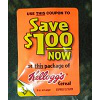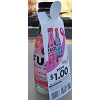In an attempt to become more budget-conscious and to put more aside in my savings account, I started to take a closer look at what I was spending money on and where it was going. I noticed a huge jump in how much I spent on groceries in the last few months and I was embarrassed, to tell you the truth (and I follow this list on how to save sans coupons to the letter).
After some research, I discovered this: The average Canadian family spends about $400-700 a month on groceries. Keep this in mind; that’s not including household cleaning products, toiletries, baby items and any other expense you have. It’s a big amount and a daunting one for some, so I decided it was time to dive further into the couponing world and went on the hunt for where to find all kinds of coupons. Compare coupon searching to a grown-up version of a treasure hunt; it might be long and tedious, but think of all the cool things you can get at the end and all the money you’ll save in the process.
Coupon searching takes time and patience, much like stockpiling. Coupons are constantly changing, so you have to constantly check for updates. Once you have found your groove and have discovered some of your favorite ways to collect coupons, it will be much easier and feel much more rewarding. Always remember: Have fun. Don’t think of it like a job, or an obligation, but as a fun hobby that the whole family can partake in.
Let’s break up the kind of coupons that exist and some resources that should help you on your coupon quest.
Printable Coupons from Your Home Printer

It’s virtually endless the amount of coupons available to be printed online. Be careful, however, to look for the key signs that indicate a coupon is real (you’ll find those detailed in my coupon stacking article) because there are fake ones flying everywhere (I still can’t figure out why people would go through the effort of counterfeiting coupons). When you do discover a real one, click the print button and present your lovely find at the counter when you purchase the item. The best part is: they are all completely free and all it took was a few mouse clicks. The only thing you need is a good pair of scissors and someone who is willing to clip your coupons for you (or you can cut them yourself). Some of my favorite printable coupon sites are:
– Our very own printable coupons page (obvious plug, we try to cherry-pick the best printable coupons and then write about them in a blog style format, allowing for printing, a success rate and comments)
– Smartsource.ca
– Livingwell.ca
– Les Surgeles (a French site)
Printable Coupons by Mail
Whereas the websites from before allow you to print from home, the followings only allow you to select the ones you would like to be mailed to your doorstep, but it remains free of charge, so it’s still an amazing plunder.
Take note that they have minimum requirements before you can place an order; make sure to read those before selecting your coupons.
– Save.ca (there is also a hot topic of discussion regarding hidden coupons for this site)
– P&GBrandsaver.ca
– Websaver.ca
– GoCoupons.ca
In-store and on Products
This should be considered the physical component of the treasure hunt. A brilliant sales tactic that most companies have adopted is to place coupons in-store, either next to their product or on it. Scan the aisles carefully the next time you take a trip to your local supermarket or pharmacy and you’re sure to find at least one product that has coupons near it. Take special care to examine products for something noticeable as well, since they could have a ‘peelie’ on them or hide a coupon inside the packaging. Some places you can find coupons in-store and on products:

- Peelie; ‘Peelie’ is a couponing term that designate a removable sticker that you peel off of the product (clever, huh?). I advise against taking peelie coupons off items that you’re not actually intending on buying. It’s poor couponing etiquette and will paint you out as a bad guy.
- Tear pads: These are pretty self-explanatory; it’s a pad full of bounty…I mean coupons. These can be either placed right in front of the item or on a huge billboard at the front of the store. If you’re lucky, you’ll be able to take advantage of both. Take a couple of them, even if you don’t need the item at the moment (better to be safe than sorry!), but never, ever take the entire pad. You don’t want to turn into an evil pirate, do you?
- Inside the product packaging: Double check the inside of products before recycling them, because they sometimes offer valuable coupons. If so they will be clearly marked on the outside. At one point, Coca-Cola was offering $5.00 off coupons on the inside of their packaging! That’s huge!
- On the back of receipts: This approach is not as popular as it once was, but it still exists! Take a glance at the back of the next receipt you get and you may be surprised at what you find! You can dig up anything from a small coupon to a freebie. Make sure to take special care of these receipts because it’s quite easy to lose them or to smudge the ink.
- Hang Tag: Much like peelies, these coupons are located on the products themselves and are hanging from them. They are often found on wine bottles, products that come in jars (like jam or peanut butter), and most household cleaning items. Check carefully before using one, because from time to time the coupon isn’t for the item it’s attached too. Again, like with peelie coupons, I advise against taking hang tag coupons from items you’re not going to buy.

From Magazines
Now, hold on before subscribing to every magazine listed under the sun just for the potential chance of a coupon; subscriptions to magazines can be expensive so unless you plan on reading them and enjoying them, this could be very counter-productive to saving money. Instead, ask friends who have subscriptions if they would mind saving any coupons they find for you. In waiting rooms, browse through the magazines available, but make sure you ask before starting to cut them. Again, we don’t want to seem like the bad guy. Some examples of magazines that feature manufacturer’s coupons on a regular basis:
- Woman’s Day
- Red Book
- Family Circle
- Good Housekeeping
- Canadian Living
- Homemakers
- Kraft (They had $14 worth of coupons in their summer 2012 issue)
Directly from the Manufacturer
Companies adore hearing feedback on how you enjoyed your item. Your input is essential to them, and if you ask nicely, will send you free samples or coupons straight to your mailbox, free of charge. Also, if you can’t find the coupon you would like listed from the websites above (which is rare), just do a search for the company and you might find coupons listed on the manufacturer’s site. Another easy way is to sign up for company’s mailing lists, but be careful not to go over-board. Try and sign up just for the items you use most often, because before long, you’ll discover that it’s time-consuming and tedious to go through thousands of emails just to search for that elusive coupon. Also, think about creating a separate email account just for this purpose.
 Newspaper Inserts
Newspaper Inserts
One of the most famous ways to get coupons is from your Sunday newspaper inserts. You know, those papers that we have a tendency to just throw away because we think it’s junk. That junk is another man’s treasure! Let’s think of it this way: let’s say your local Sunday newspaper costs $1.50, but there’s $6.00 worth of coupons in there. That’s a big amount of savings for any couponer. If you would really like to go to the extreme, consider buying more than just one copy, and if the coupons are different, buy more than just one brand of newspaper (for example: Buy a Montreal Gazette and a Journal de Montréal if the coupons aren’t the same). Coupons can also vary from region to region, so if you can manage to get your hands on a newspaper that isn’t local, go for it. The more coupons to add to your treasure trove, the better.
If you can’t afford to spend money to buy newspapers in bulk (because you’re trying to be frugal), enlist friends and family that receive them on a weekly basis and have them save the inserts for you. I also read somewhere that if you have a friendly deliverer and you ask very, very nicely, they will save the extra inserts for you. Not all of them will do it, but there’s no harm in asking.
A list of which newspapers have inserts: Simply Frugal has compiled a list for every province. They have also included a schedule of which companies inserts are included for 2012 (they will probably do if for later years too, if they’re still around), which can be found here.
Coupon Trading/Coupon Trains
These are a bit more complicated and take more time, effort and connections. Coupon trading is exactly as the name suggests; you’re trading or exchanging coupons with others. Just start advertising with your friends and family and you’re bound to find another secret couponer (I have more friends than I realized that were huge couponers). It’s a good way to get rid of those pesky coupons you have no need for, and to get your hands on an elusive coupon that you can’t find anywhere.
I’m not an expert on coupon trains and have very little knowledge on them but the forum from smartcanucks offers great information on the subject. They have more details about what they are, and give people the chance to start joining trains (sometimes it takes a while to gain a trust factor though).
The key to all of this is to have fun on your way through this grown-up version of a treasure hunt. I would advise against dressing up as a pirate as you go wandering down store aisles, granted that would make for an interesting story to tell. If you have any other secret spots for coupons that I have missed, let me know. Drop me a comment below or leave me a message on our Facebook page. Happy plundering!
